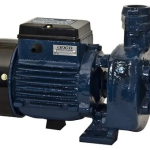
Introduction
The unassuming AAA batteries are ubiquitous power sources in our everyday lives. Despite their small size, these batteries play a vital role in powering a vast array of devices, keeping us connected, entertained, and informed. This blog covers all about AAA batteries, exploring their importance, the different types available, and the applications where they shine.
A Brief Overview
AAA batteries, also called triple-A batteries, are small cylindrical and go-to power sources designed to power a wide range of low-drain devices and gadgets in various facilities. These slimmer batteries carry a nominal voltage of 1.5 volts, which can vary slightly depending on the battery type. They are single dry cell batteries that typically come in various chemistries like alkaline, lithium, or nickel-metal hydride (NiMH). Additionally, an AAA battery is the most popular battery widely used in portable electronics and gadgets that do not require much power, including but not limited to TV remotes, wireless mice, and game controllers.
The Need for AAA Batteries: Unveiling Their Importance
AAA batteries are the power horses of portable electronics and handy go-to power sources for countless devices. Imagine a world without functioning remotes for your TV, gaming controllers powerless mid-match, or silence from your smoke detectors. They ensure these devices operate seamlessly, keeping our homes comfortable, our entertainment uninterrupted, and our safety protected.
Beyond convenience, triple-A batteries are significant because they can supply a steady, reliable power supply, fit into smaller gadgets, are cost-effective, are portable, and are easy to access. Additionally, the versatility and rechargeability of these batteries are prominent in a multitude of applications and provide an environmentally friendly alternative to disposable batteries.
Exploring the Most Popular Types
AAA batteries come in various types and chemistries, each tailored to meet specific performance and needs. Though seemingly identical on the outside, their inner workings differ. Understanding these differences signifies the correct battery for your device. The most common types of triple-A batteries include:
Alkaline AAA Batteries
Alkaline AAA batteries—the most common type of batteries—are known for their long shelf life and stability. They can power a myriad of devices, including toys, flashlights, and wireless mice. Due to their single-use design and disposal convenience, alkaline batteries are a cost-effective choice for regular, low-to-medium-drain devices.
AAA Lithium Batteries
Lithium AAA batteries provide a higher energy density and longer lifespan than their alkaline and NiMH counterparts. They perform exceptionally well in extreme temperatures, which makes them ideal for outdoor and emergency equipment. Despite their higher cost, lithium batteries are favoured in critical applications requiring robust performance and reliability.
AAA Rechargeable Batteries
Rechargeable AAA batteries, such as those made from nickel-metal hydride (NiMH) or lithium-ion, offer a sustainable alternative to alkaline batteries. Although initially more expensive, they can be recharged hundreds of times. This significantly reduces waste and provides a better long-term investment for high-use devices like digital cameras and gaming controllers.
AAA Batteries in Action: Uncovering Their Real-World Applications
AAA batteries can provide a consistent power source for low-drain, moderate-drain, and high-drain devices in various applications. Some of the common devices they power include:
- Remote Controls: From televisions to air conditioners, remotes rely on AAA batteries for sending wireless signals.
- Portable Electronics: Devices like MP3 players and wireless mice often depend on triple-A batteries for power.
- Gaming Controllers: Wireless controllers for gaming consoles use these batteries to provide uninterrupted gameplay.
- Digital Cameras: Many compact digital cameras get power from bespoke batteries, making them convenient for capturing memories on the go.
- Smoke Detectors and Carbon Monoxide Alarms: These crucial safety devices often use triple-A batteries to ensure proper function.
- Toys: Small electronic toys and remote-controlled vehicles frequently employ these batteries for operation.
- Flashlights: Many portable flashlights use AAA batteries due to their small size and reliability. They are easy to replace, ensuring that users always have a light source available when needed.
- Clocks and Timers: Wall clocks, alarm clocks, and kitchen timers require triple-A batteries for power.
- Medical Devices: In healthcare, these batteries are vital for powering a variety of medical devices, including digital thermometers and portable blood pressure monitors.
Bottom Lines
AAA batteries may be small, but their impact on the functionality and convenience of modern technology is immense. Whether alkaline, rechargeable, or lithium, each type offers specific benefits that can cater to various needs and applications. From household gadgets to critical medical devices, the widespread use of triple-A batteries underscores their fundamental role in today’s electronic-driven world. By understanding the different types of these batteries, their significance, and their applications, consumers can make informed choices that ensure their devices operate efficiently and sustainably.





















